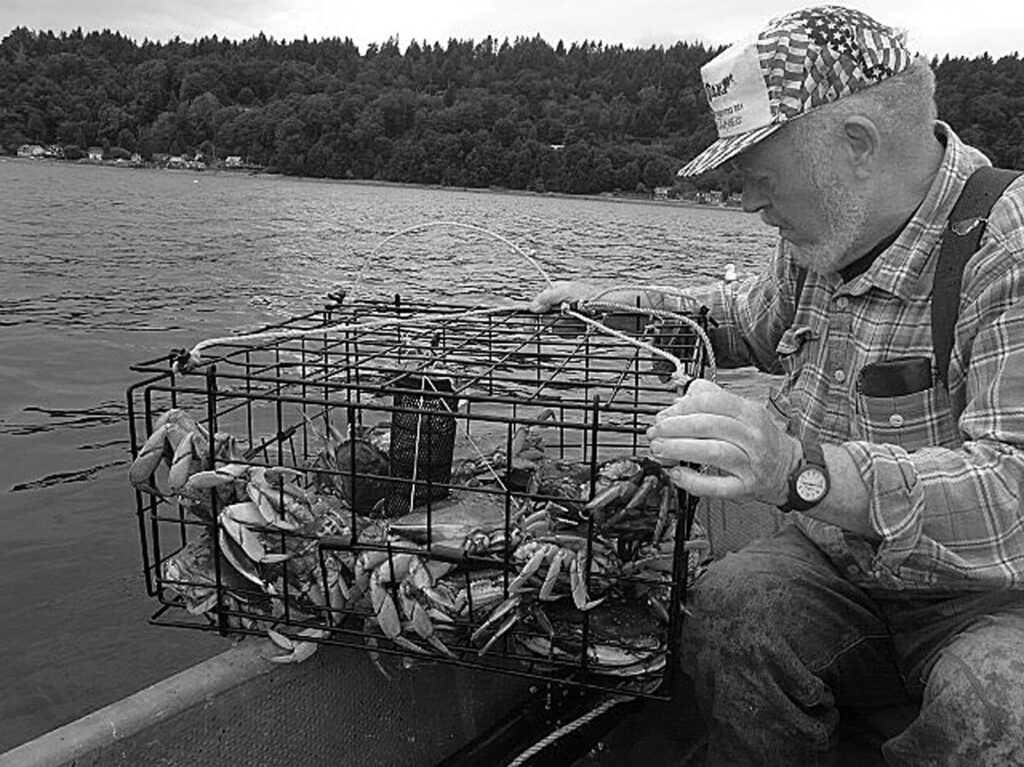By Seán Malone and John Sweetman
“Hey Mike, he’s hiding under that patch of seaweed.”
We were hunting crab with a pitchfork down at Manzanita on the south end of Maury Island. Crabs can move as fast as a person walks on dry land. Mike poked the pitchfork into the seaweed and scared the ten-inch Dungeness into the open.
Two GIs, from the Nike site, were out a lot further and diving for the crabs with bare hands. This is a dangerous way to hunt crab because a ten-inch crab can break a finger if a person isn’t careful. The army guy caught Mike’s crab in the deeper water and swam in to give the crab to me, which I promptly dropped into the galvanized tub we pulled along behind us. The GIs weren’t paid much, and they fished off the Standard Oil dock or caught crab to help feed their families. They had a couple of dozen crabs that day, and weren’t going to miss the ten inches they gave to Mike and me.
In anticipation of a minus or very low tide, Dad and his fellow Sportsmen’s Club members would drink until the wee hours of the morning and then head for the Ellisport beach to hunt crab. They used waders that were chest-high to navigate the bottom of Tramp Harbor, which turned out to be Dad’s undoing. He was crabbing with Earl and George McCormick, who had a big fire on the beach.
Dad’s tub was full of crabs when he caught another. They used a two-mantle Coleman lantern to search the bottom. Dad had cut apart a large tomato juice can and wired it to the back of his lantern, thus illuminating the bottom, but not getting in his eyes. There was a blood-curdling yell from way out in the bay, and Dad was hurtling towards the shore, his tub full of crabs, creating a wave behind him.
Still yelling, he ripped his waders off to reveal the cause of his agony. There hadn’t been room for one more crab in his tub, so he had dropped the last crab down his waders and suffered the consequences.
The story was repeated many times down at the Sportsmen’s Club, much to Dad’s consternation.
“At those times” we appeared to have no limits and hardly any seasons. Plus, no license for kids! And nobody ever measured the shell. Rock or red crabs were the sweetest, but they yielded less meat and were hard to crack. Which maybe is why we called them “rock crabs.”
The crabs were boiled about as soon as we got them ashore, cracked, and eaten with loads of butter. Crab chowder was made with “crab” butter and smaller pieces.
It seems times have changed, as well as crab success, which is a bit spotty. We now get a license, throw out undersized and females, put our pots down in ”season,” and especially do not put excess catch down our pants. Nevertheless, we are not going to reveal our secret crab trench spot!

